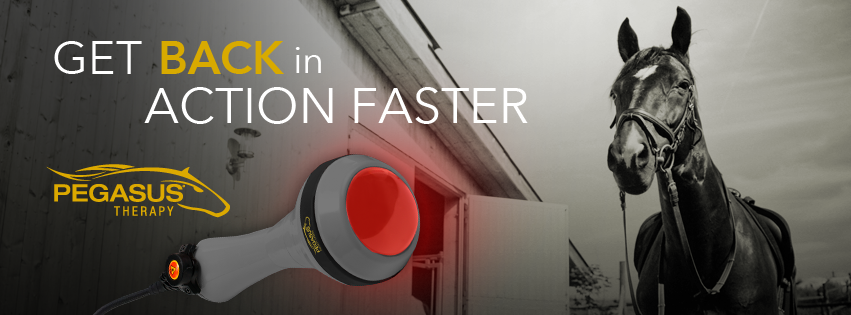The Power of Equine Therapy for Anxiousness, PTSD, and Psychological Healing
The Power of Equine Therapy for Anxiousness, PTSD, and Psychological Healing
Blog Article
Examining the Effectiveness of Laser Treatment in Horse Treatment for Injury Recovery
The analysis of laser treatment's performance in equine injury rehabilitation pivots on several elements, including recuperation time, pain reduction, and cells regrowth. Vets regularly observe remarkable results with laser therapy contrasted to conventional approaches, positioning it as an important element in equine care.
Comprehending Laser Therapy
Laser treatment has ended up being a critical device in veterinary medicine, specifically in the therapy of equine problems. Known for its non-invasive nature and efficacy, laser therapy involves the application of certain wavelengths of light to promote cells repair and minimize inflammation. This therapeutic technique is significantly preferred for its capacity to increase the healing process in equines experiencing a selection of musculoskeletal injuries and chronic problems.
The primary system behind laser therapy is its capability to boost cellular functions. When laser light penetrates the skin, it is taken in by mitochondria, the powerhouse of cells, which results in raised production of adenosine triphosphate (ATP) This biochemical energy increase facilitates cellular repair and regrowth. In addition, laser treatment advertises vasodilation, improving blood circulation and oxygen shipment to damaged cells, therefore quickening recovery.
In equine medication, laser treatment is particularly helpful for problems such as tendonitis, osteo arthritis, and wound healing. The technique is lauded for its pain-relieving homes, enabling equines to reclaim mobility and function much more quickly. Vets additionally value its marginal side results contrasted to various other therapy methods, making it a dependable and safe option for equine care.

Just How Laser Treatment Functions

Upon absorption, these photons set off a collection of biochemical modifications, improving mitochondrial function and bring about boosted adenosine triphosphate (ATP) production. This surge in ATP speeds up cellular metabolic rate, advertising tissue fixing and regeneration. Additionally, laser treatment modulates inflammatory feedbacks by impacting cytokine degrees and minimizing oxidative stress, therefore easing pain and swelling.
Another substantial facet of laser therapy is its duty in improving microcirculation. The therapy advertises vasodilation, improving blood flow and oxygen delivery to damaged cells (Equine Therapy). This helps with the elimination of cellular particles and supports the spreading of fibroblasts and collagen synthesis, essential for injury healing
Scientific Evidence
The effectiveness of laser treatment in equine treatment has actually been substantiated with various professional studies, showcasing its restorative possible across a variety of problems. Several controlled tests and observational studies have actually recorded significant improvements in cells fixing, pain reduction, and total recovery timelines. For instance, a research study performed by Turner et al. (2012) showed that horses treated with low-level laser therapy (LLLT) for tendon injuries displayed increased healing compared to those getting standard therapies. The study highlighted a marked reduction in inflammation and enhanced collagen formation.
Likewise, research study by Johnson and colleagues (2015) focused on equine muscle injuries, disclosing that laser treatment dramatically quickened muscular tissue fiber regrowth and lowered muscular tissue tightness. These findings were proven by histological analyses revealing better muscle tissue company. In addition, scientific evaluations have revealed that laser therapy can alleviate persistent problems such as osteo arthritis. A research study by Smith et al. (2018) reported that horses with osteoarthritic joints experienced remarkable pain alleviation and increased array of motion following a regimen of laser treatment sessions.
Vet Insights

Vets likewise value the versatility of laser treatment. It can be used for a large range of problems, from surface injuries to deeper musculoskeletal injuries. Dr. Emily Brown highlights its utility in treating conditions like tendonitis and osteoarthritis, where conventional therapies typically fail. She explains that laser treatment can be customized to the certain requirements of each horse, ensuring optimum end results.
Moreover, vets value the capability to integrate laser treatment with other check over here treatment modalities. This multimodal approach can boost general therapy effectiveness, providing a thorough option for equine rehabilitation. Such recommendations from experienced professionals emphasize the growing approval and application of laser therapy in equine medication.
Practical Factors To Consider
A crucial aspect of implementing laser treatment in equine treatment includes comprehending the practical factors to consider that guarantee its efficiency and safety and security. Primarily, it is vital to choose the proper laser device, as numerous types vary in wavelength, power, and penetration depth. Equine Therapy. Veterinarians have to be well-versed in these specifications to customize treatment procedures effectively to every injury kind
Moreover, the regularity and duration of laser therapy sessions need cautious preparation to maximize healing benefits while lessening any kind of potential negative results. Consistent monitoring of the equine's feedback to therapy can guide required modifications in the treatment routine. Establishing a safe and regulated setting throughout therapies is also important to stop unintended direct exposure to laser emissions, which could harm both the equine and the handler.
Training and accreditation go to this website of employees carrying out laser therapy are paramount to ensure proper technique and to support security requirements. In addition, keeping accurate records of each session, including laser settings and observed outcomes, is important for assessing the general efficiency of the therapy and for making data-driven choices.
Verdict
Laser treatment has emerged as a reliable technique in equine injury rehabilitation, offering considerable benefits in recuperation time, discomfort alleviation, and tissue recovery. For ideal results, constant monitoring and customized treatment methods remain crucial in leveraging the full possibility of laser therapy in equine treatment.
Report this page